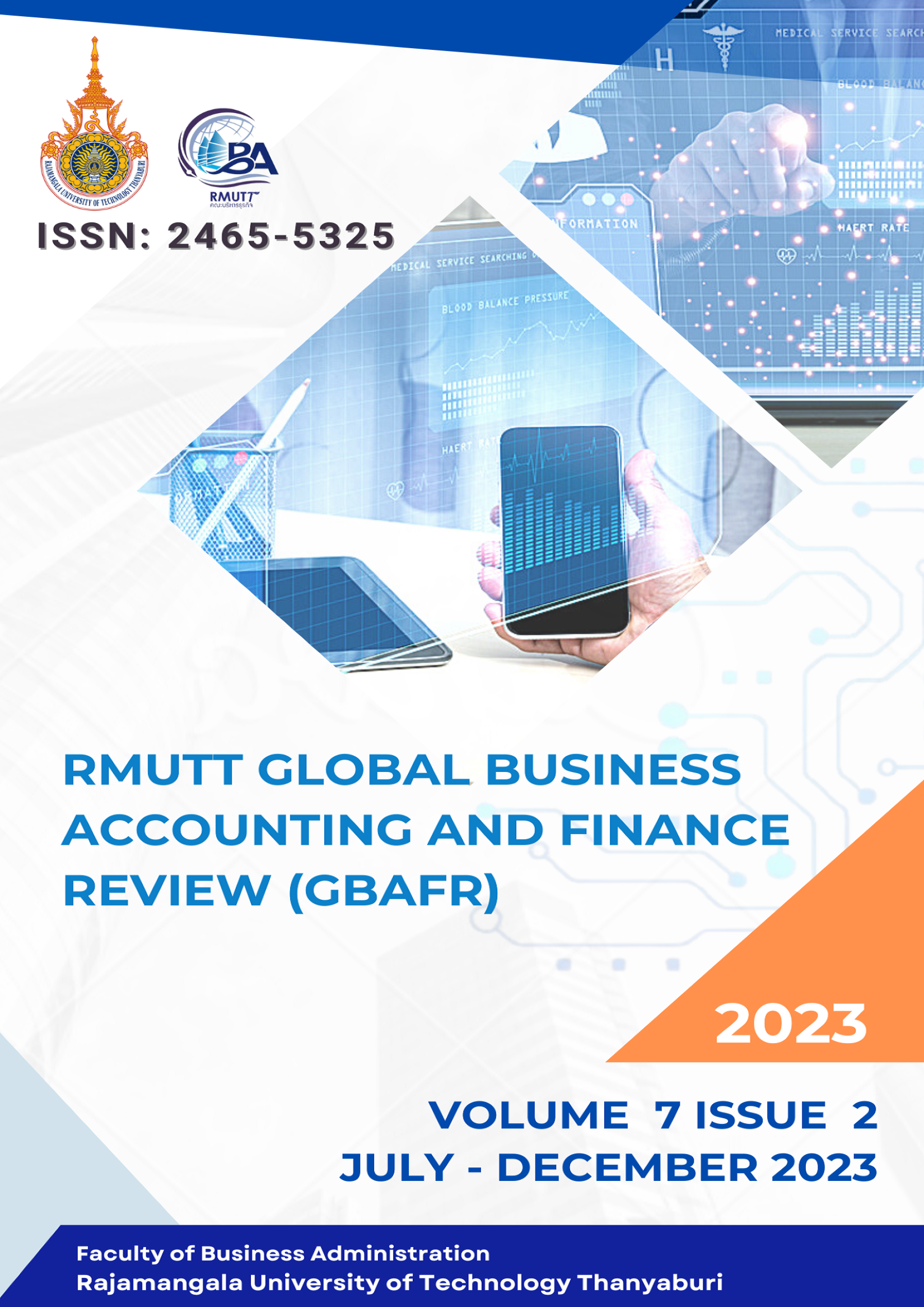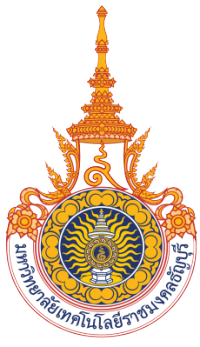EXPLORING THE IMPACT OF LOCAL KNOWLEDGE ON BRAND EQUITY AND PURCHASE INTENTIONS: A CASE STUDY OF CULTURAL PRODUCTS IN PATHUM THANI
DOI:
https://doi.org/10.60101/gbafr.2023.263976Keywords:
Local knowledge, Brand equity, Purchase intentions, Cultural products, Pathum ThaniAbstract
Purpose – The purpose of this research was to provide a comprehensive picture of the enhancing cultural product purchase intentions of prospective customers by jointly studying the impact of local knowledge and brand equity on purchasing behavior as well as responding to recent calls for research in the local business literature, especially in Pathum Thani province in Thailand.
Methodology – The research methodology was quantitative research with survey method by using questionnaires for data collection. The respondents were 400 participants, who had experience of purchasing cultural products. Pathum Thani was selected to conduct the empirical analysis of this research. Descriptive statistics used for data analysis included frequency, percentage, mean, and standard deviation. Due to hypothesis testing, inferential statistics used was Structural Equation Modeling (SEM).
Results – The results of hypothesis testing revealed that cultural knowledge of the local area or the customers’ perception of community intelligence is the most influencing brand equity component. Furthermore, a positive relationship is observed between brand equity elements and purchase intentions of cultural products.
Implications – The findings present several implications for both academia and practical implications, highlighting the impacts of the customers’ perception of community intelligence on brand equity and purchase intentions for effective marketing strategies planning.
Originality/Value – This empirical study explores the impact of customers’ perception towards cultural knowledge or community intelligence play a crucial role for enhancing brand equity and purchase intentions of cultural products, particularly in Thai context.
References
Aaker, D.A. (1991). Managing Brand Equity. Free Press.
Aaker, D.A. (1994). Building a Brand: The Saturn Story. California Management Review, 36(2), 114-133.
Aaker, D.A. (1996). Building Strong Brand. Free Press.
Adam, M.A. & Akber, S.N. (2016). The Impact of Brand equity on Consumer Purchase Decision of Cell Phones. European Journal of Business and Innovation Research, 4(4), 60-133.
Ahsan, S.M.H., Azam, M.K.G., Raihan, M.Z., Iman, I.B. & Islam, M.N. (2020). Impact of Brand Equity on Consumer Purchase Decisions of Smart Phone: A Case Study on University Students in Chittagong, Bangladesh. Global Journal of Management and Business Research, 20(6), 37-41.
Ajzen, I. (1991). The Theory of Planned Behavior. Organizational Behavior and Human Decision Processes, 50(2), 179-211.
Ajzen, I. (1985). From Intentions to Actions: A Theory of Planned Behavior. in Kuhl, J. and Beckman, J. (Eds), Action-Control: From Cognition to Behavior, Springer, Heidelberg, 11-39.
Akhtar, N., Ain, Q., Siddiqi, U.I., Ashraf, A. & Latif, M. (2016). Impact of Brand Equity on Consumer Purchase decision in L’Oreal skincare products. International Review of Management and Business Research, 5(3), 808-816.
Anderson, J.C. & Gerbing, D.W. (1988). Structural Equation Modeling in Practice: A Review and Recommended Two-Step Approach. Psychological Bulletin, 103(3), 411-423.
Arif, A. (2016). Brand Equity’s Impact on Consumer Willingness to Pay Premium Price: An Extension to Theory of Planned Behavior [Unpublished Master’s thesis]. COMSATS Institute of Technology.
Ashraf, S., Yaseen, A. & Hasnain, A. (2017). Do They Care What They Believe? Exploring the Impact of Religiosity on Intention to Purchase Luxury Products. Pakistan Journal of Commerce and Social Sciences, 11(2), 428-447.
Buil, I., Martinez, E. & de Chernatony, L. (2013). The Influence of Brand Equity on Consumer Responses. Journal of Consumer Marketing, 30(1), 62-74.
Chatzipanagiotou, K., Christodoulides, G. & Veloutsou, C. (2019). Managing the Consumer-Based Brand Equity Process: A Cross-Cultural Perspective. International Business Review, 28(2), 328-343.
Civelek, M.E. & Ertemelb, A.V. (2019). The Role of Brand Equity and Perceived Value for Stimulating Purchase Intention in B2C E-Commerce Web Sites. Business and Economics Research Journal, 10(1), 233-243.
Creative Economy Agency (2022). Creative Information Center (CIC). https://www.cea.or.th/th/economy-review
Dissabandara, R. (2020). Impact of Brand Equity and Loyalty on Consumer Behavior for Clothing Industry in Sri Lanka. International Journal of Current Research, 11(5), 3782-3787.
Farquhar, P.H. (1989). Managing Brand Equity. Marketing Research, 1, 24-33.
Fatoki, O. (2020). Factors Influencing the Purchase of Energy-Efficient Appliances by Young Consumer in South Africa. Foundations of Management, 12(1), 151-166.
Fornell, C., & Larcker, D. F. (1981). Structural Equation Models with Unobservable Variables and Measurement Error: Algebra and Statistics. Journal of Marketing Research, 382–388.
Gordon, B.S., James, J.D. & Yoshida, M. (2016). The Development of Brand Association Measures in Multiple Product Categories: New Findings and Implications for Goods and Service Brands. International Journal of Business Administration, 7(3), 140-152.
Grenier, L. (1989). Working with Indigenous Knowledge: A Guide for Researchers. Ottawa: International Development Research Centre.
Hair, J.F., Hult, T., Ringle, C. M., & Sarstedt, M. (2013). A Primer on Partial Least Squares Structural Equation Modeling (PLS-SEM). SAGE Publications.
Iacobucci, D. (2010). Structural Equations Modelling: Fit Indices, Sample Size, and Advanced Topics, Journal of Consumer Psychology, 20(1), 90-98.
IGI Global (2022). What is Cultural Products. https://www.igi-global.com/dictionary/the-cultural-product/39220
Jones, T.O., & Sasser, W. (1995). Why satisfied Costumers Defect. Harvard Business Review, 73, 88–99.
Keller, K.L. (1993). Conceptualizing, Measuring and Managing Customer-Based Brand Equity”, Journal of Marketing, 57(1), 1-22.
Keller, K. L. (1998). Strategic Brand Management, Building, Measuring, and Managing Brand Equity. Upper Saddle River, NJ: Prentice Hall.
Keller, K.L. (2009). Building Strong Brands in Modern Marketing Communication Environment. Journal of Marketing Communications, 15(2/3), 139-155.
Kotler, P. & Gertner, D. (2002). Country as Brand, Product and Beyond: A Place Marketing and Brand Management Perspective. Journal of Brand Management, 9(4), 249-261.
Kotler, P. & Pfoertsch, W. (2007). Being Known or Being One of Many: The Need for Brand Management for Business-to-Business (B2B) companies. Journal of Business and Industrial Marketing, 22(6), 357-362.
Lama, A. (2017). Consumer Purchase Intention: An Empirical Study of Consumer Buying Behavior with Respect to Country of Origin, BAW, Brand loyalty, Brand Image and Perceived Quality. [Unpublished Master’s thesis]. Nord University, Norway.
Marketing Evolution (2022). Marketing Essentials. https://www.marketingevolution.com/marketing-essentials
Neuman, W.L. (2014). Social Research Methods: Qualitative and quantitative approaches (7th ed.). Essex: Pearson.
Ngulube, P. & Onyancha, O.B. (2011). What’s in a Name? Using Informetrics Techniques Conceptualize the Knowledge of Traditional and Indigenous Communities. Indilinga: African Journal of Indigenous Knowledge System, 10(2), 129-152.
Ngulube, P. & Onyancha, O.B. (2017). Conceptualizing the Knowledge of Traditional and Indigenous Communities Using Informetrics Approaches. Indigenous Studies. IGI Global, 362-388.
Nomi, M. & Sabbir, M.M. (2020). Investigating the Factors of Consumer’s Purchase Intention towards Life Insurance in Bangladesh: An Application of the Theory of Reasoned Action. Asian Academy of Management Journal, 25(2), 135-165.
Noorlitaria, G., Pangestue, F.R., Fitriansyah, S.U. & Mahsvar, S. (2020). How Does Brand Awareness Affect Purchase Intention in Medication by Perceived Quality and Brand Loyalty. Journal of Critical Reviews, 7(2), 103-109.
Nunnally, J. C., & Bernstein, I. (1994). The Assessment of Reliability. Psychometric Theory, 3(1), 248–292.
Ossai, N. B. (2010). African Indigenous Knowledge Systems. Simbiosis, 7(2), 1–13.
Owuor, J. A. (2007). Integrating African Indigenous Knowledge in Kenya’s Formal Education System: The Potential for Sustainable Development. Journal of Contemporary Issues in Education, 2(2), 21-37.
Ozer, G. & Yilmaz, E. (2011). Comparison of the Theory of Reasoned Action and The Theory of Planned Behavior: An Application on Accountants’ Information Technology Usage. African Journal of Business Management, 5(1), 50-58.
Padhy, S.K. & Sawlikar, R.K. (2018). The Role of Brand Equity and Brand Awareness on Consumer’s Purchase Intention. International Journal of Business and Management Invention, 7(1), 12-16.
Perera, K., Wijisekera, K., Priyadarshani, B., Koodippili, L. & Jayssuriya, N.A. (2019). The Study of Brand Equity and Purchase Intention of Shampoo Market in Sri Lanka. Global Journal of Management and Business Research: E-Marketing, 19(4), 24-28.
Pye, E. (1986). Crafting the Future. Craft International, 4(l), 27-35.
Rittibul, P. (2020). A Study of the Cultural Products to be Creative Design Performance. Fine Arts Journal: Srinakharinwirot University, 24(1), 77–96.
Ruangkanjanases, A., You, J.J., Chien, S.W., Ma, Y., Chen, S.C. & Chao, L.C. (2020). Elucidating the Effect of Antecedents on Consumers’ Green Purchase Intentions: An Extension of the Theory of Planned Behavior. Frontiers in Psychology, 11, 1-13.
Saad, R., Ishak, H. & Johari, N.R. (2013). The Impact of Demographic Factors toward Customer Loyalty: A Study on Credit Card Users. Elixir Marketing Management, 55, 1,3078-1,3084.
Santoso, C.R. & Cahyadi, T.E. (2014). Analyzing the Impact of Brand Equity towards Purchase Intention in Automotive Industry: A Case Study of ADC in Surabaya. iBuss Management, 2(2), 29-39.
Senanayake, S. G. J. N. (2006). Indigenous Knowledge as a Key to Sustainable Development. The Journal of Agricultural Science, 2(1), 87-94.
Schmitz, A. & Roman, N.V. (2018). Do Brands Matter in Unlisted Firms? An Empirical Study of the Association between Brand Equity and Financial Performance. Administrative Sciences, 8(4), 1-12.
Tariq, M., Abbas, T., Abrar, M. & Iqbal, A. (2017). EWOM and Brand Awareness Impact on Consumer Purchase Intention: Mediating Role of Brand Image. Pakistan Administrative Review, 1(1), 84-102.
Tuan, T.N. & Vinh, T.T. (2016). An Exploration in the Theory of Planned Behavior: A Case of Organic Food in Vietnam”, International Journal of Applied Business and Economic Research, 14(6), 4,951-4,972.
Wang, Y. (2014). Consumer’s Purchase Intentions of Shoes: Theory of Planned Behavior and Desired Attributes”, International Journal of Marketing Studies, 6(4), 50-58.
Wang, Z., & Wang, N. (2012). Knowledge Sharing, Innovation and Firm Performance. Expert Systems with Applications, 39(10), 8899–8908.
Wright, M.J. & MacRae, M. (2007). Bias and Variability in Purchase Intention Scales. Journal of the Academy of Marketing Science, 35, 617-624.
Yu, H., & Littrell, M. A. (2003). Product and Process Orientations to Tourism Shopping. Journal of Travel Research, 42, 140-150.
Downloads
Published
How to Cite
Issue
Section
License
Copyright (c) 2023 Faculty of Business Administration, Rajamangala University of Technology Thanyaburi

This work is licensed under a Creative Commons Attribution-NonCommercial-NoDerivatives 4.0 International License.









